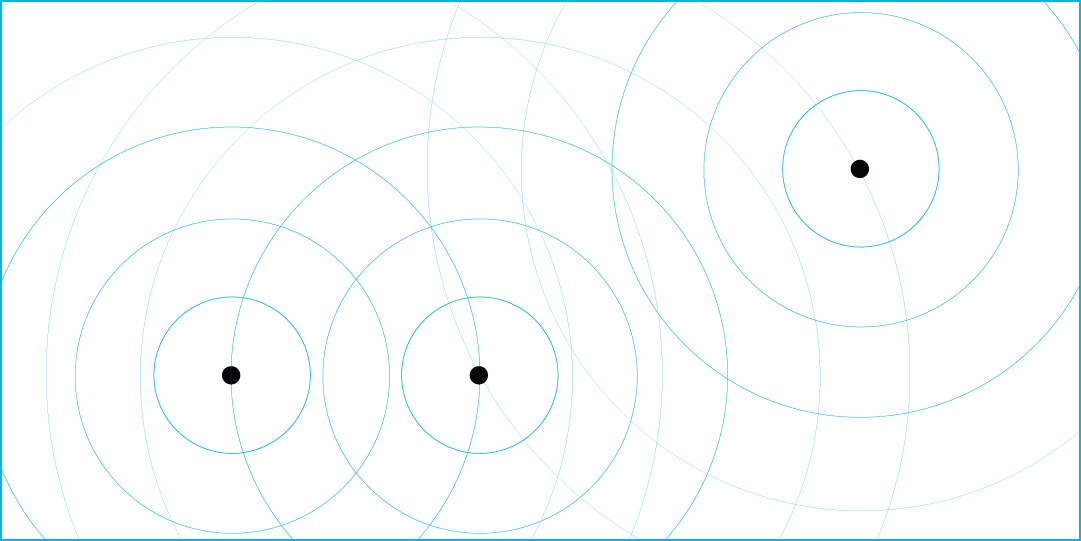2.1 The spatial delay
It is generally difficult for us to understand how the speed of light can be measured as constant regardless of the frame of reference. If an object is moving rapidly with respect to us, why is the speed of the emitted light not added to the speed of the object? How is this possible?
The spatial delay is a different approach to conceptualizing the the speed of light. It makes this phenomenon easier to understand by relating it to the completely interconnected aspects of a spatial distance and its temporal delay. Distance is equivalent to a delay. Space is a time filter.
According to the MRM, the motion of light (free momenta) is of a different nature than the motion of matter (compounds). Electromagnetic waves are considered to be free momenta, which have a spatial position, a direction and a magnitude but no velocity in its correct sense. Light will travel at a maximum speed according to all frames of reference. This maximum speed is determined by a spatial delay, which is the time required for any change to propagate through space.
The visualization: Imagine standing in a mist. Objects will appear to be very clear when they are close, whereas objects will appear increasingly white the farther away they are. Now, imagine being in space. The mist is still present, but instead of objects becoming whiter with distance, one�s perception of when events occur is delayed by the distance to the object. The now is delayed by the distance.
The Light Particle Approach |
The Spatial Delay Approach |
 |
 |
| Light is conceptualized as weightless particles traveling with the same type of motion as matter, but the speed of these particles appears to be constant in all frames of reference. | All changes are delayed by the distance to the change. The delay is equivalent to and the definition of geometric distance. |
Principle of the spatial delay
Free momenta (electromagnetic quanta) can be regarded as immediate transmissions of momenta, but the perception of when events occur is delayed by exactly 1/299,792,458th of a second per meter. This delay is the definition of geometric distance itself.
In what sense can electromagnetic transmissions be considered �immediate�? One aspect that often is not considered when discussing electromagnetic quanta is traditionally called time dilation, and as will be demonstrated later, it is just as real according to the MRM as it is in SR. If something appears to move at "the speed of light", it will certainly experience the ultimate time dilation. A free momentum must observe itself to reach its destination in no time at all. If one could ask a ray of light how quickly it was moving, it would say that it moved directly from its source to its destination. The momentum is projected immediately through the geometry of its surroundings to a destination point of any distance away. The generation and the absorption of the momentum must be considered to be the same event. (This fact could also help to illuminate the phenomenon of quantum entanglement.)
Consequently, free momenta are unable to perform any internal actions during their travel. They can move neither more slowly nor more rapidly than the spatial delay, meaning that they cannot express any velocity in themselves.
The MRM takes these observations into account; therefore, free momenta lack a velocity. They travel at the maximum speed permitted by the time filter called space.
"The speed of light" should thus not be considered to be a speed in the strict sense. �The speed of light� is merely a measurable result of the spatial time filter � the time-space.